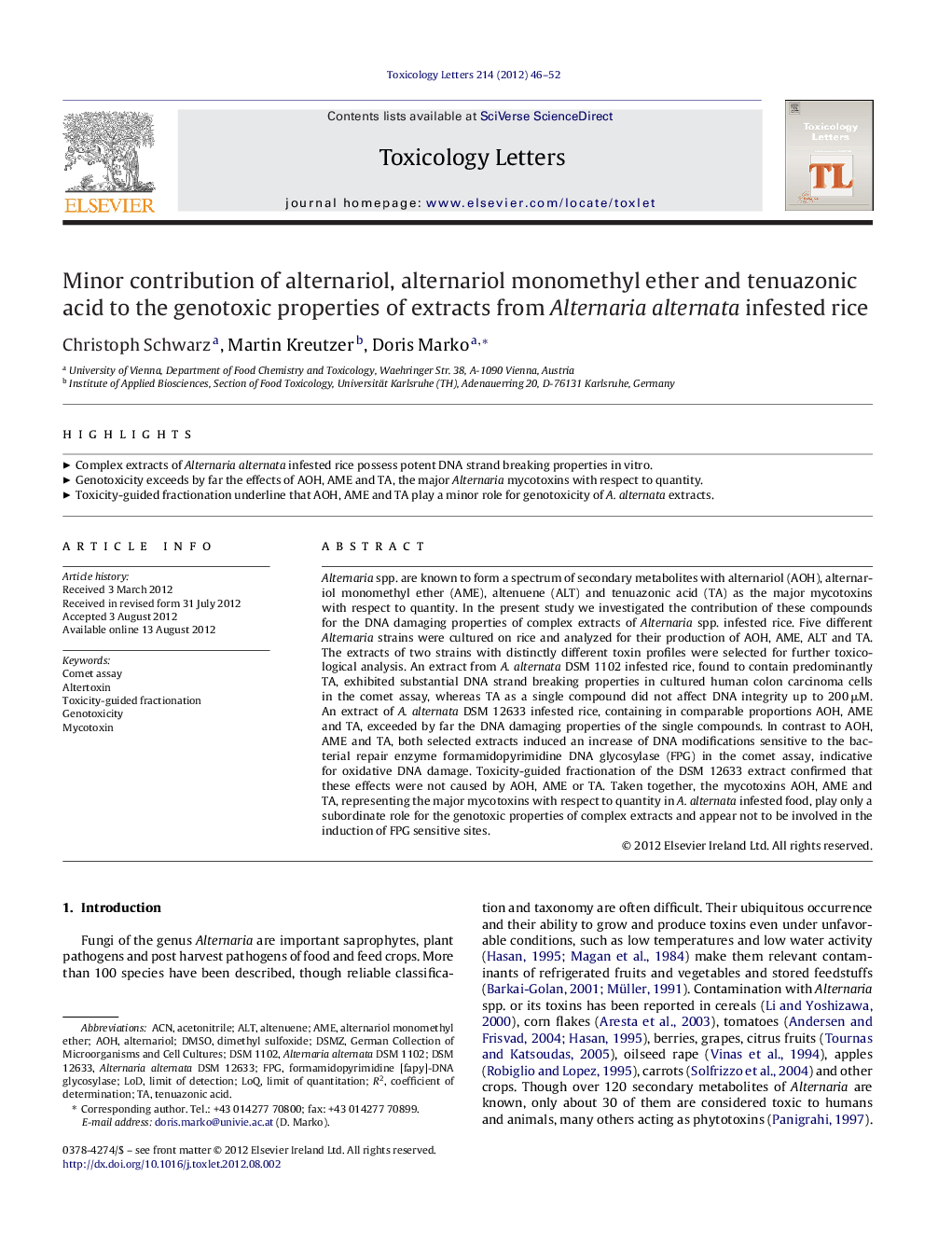| Article ID | Journal | Published Year | Pages | File Type |
|---|---|---|---|---|
| 2599503 | Toxicology Letters | 2012 | 7 Pages |
Alternaria spp. are known to form a spectrum of secondary metabolites with alternariol (AOH), alternariol monomethyl ether (AME), altenuene (ALT) and tenuazonic acid (TA) as the major mycotoxins with respect to quantity. In the present study we investigated the contribution of these compounds for the DNA damaging properties of complex extracts of Alternaria spp. infested rice. Five different Alternaria strains were cultured on rice and analyzed for their production of AOH, AME, ALT and TA. The extracts of two strains with distinctly different toxin profiles were selected for further toxicological analysis. An extract from A. alternata DSM 1102 infested rice, found to contain predominantly TA, exhibited substantial DNA strand breaking properties in cultured human colon carcinoma cells in the comet assay, whereas TA as a single compound did not affect DNA integrity up to 200 μM. An extract of A. alternata DSM 12633 infested rice, containing in comparable proportions AOH, AME and TA, exceeded by far the DNA damaging properties of the single compounds. In contrast to AOH, AME and TA, both selected extracts induced an increase of DNA modifications sensitive to the bacterial repair enzyme formamidopyrimidine DNA glycosylase (FPG) in the comet assay, indicative for oxidative DNA damage. Toxicity-guided fractionation of the DSM 12633 extract confirmed that these effects were not caused by AOH, AME or TA. Taken together, the mycotoxins AOH, AME and TA, representing the major mycotoxins with respect to quantity in A. alternata infested food, play only a subordinate role for the genotoxic properties of complex extracts and appear not to be involved in the induction of FPG sensitive sites.
► Complex extracts of Alternaria alternata infested rice possess potent DNA strand breaking properties in vitro. ► Genotoxicity exceeds by far the effects of AOH, AME and TA, the major Alternaria mycotoxins with respect to quantity. ► Toxicity-guided fractionation underline that AOH, AME and TA play a minor role for genotoxicity of A. alternata extracts.
